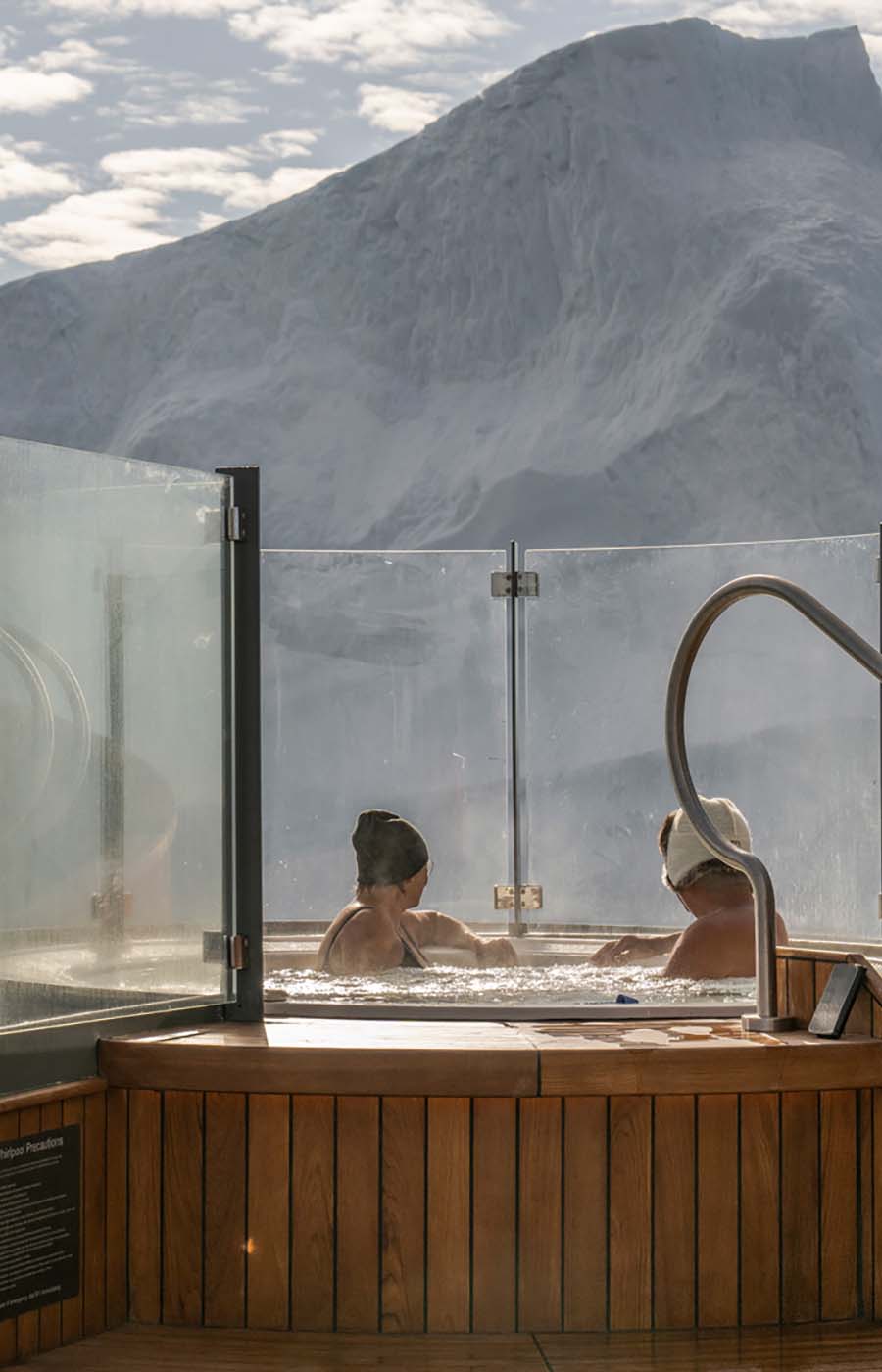America’s largest national park, with its ruggedly enthralling landscape, is packed with boundless opportunities for adventure.
Spectacularly expansive yet breathtakingly isolated, Wrangell–St. Elias National Park & Preserve is truly a place that you have to see to believe. It’s a magical setting where scale and solitude merge, resulting in a once-in-a-lifetime experience for all who are lucky enough to visit. Read on to discover more about this natural wonder.
The Rundown
Wrangell–St. Elias National Park & Preserve possesses a list of superlatives that’s seemingly as large as the park itself. First and most notably, it’s the largest national park in the United States, covering 13.2 million acres (six times the size of Yellowstone National Park). It’s also the largest wilderness area in the National Wilderness Preservation System. And it’s a designated UNESCO World Heritage Site, which — along with nearby Glacier Bay National Park & Preserve (which numerous Seabourn Alaska itineraries allow guests to experience up close) and its Canadian neighbors Kluane National Park Reserve and Tatshenshini-Alsek Provincial Park — makes this the largest international protected wilderness on the globe.
Mountains & Glaciers
If you like mountains and glaciers, book a ticket here immediately. Four major mountain ranges grace this national park: Wrangell, St. Elias, Chugach, and the eastern part of the Alaskan range. Altogether, they house nine of the 16 highest peaks in the U.S.: Mt. St. Elias, at 18,008 feet (5,488 meters), is the second-highest peak, and Mt. Wrangell, at 14,163 feet (4,316 meters), is one of the largest active volcanoes in North America. And the park’s glaciers are just as spectacular, covering 35 percent of its surface area. Just a few of the most notable are the Nabesna Glacier, which is the world’s longest interior valley glacier; the Malaspina Glacier, which is the largest non-polar piedmont glacier in North America; and the Hubbard Glacier, one of North America’s largest and most active tidewater glaciers.
Vegetation & Wildlife
While the first thing you notice here is a stark grandeur that makes you turn your gaze up (way up), a closer look at the environment around you reveals an extensive ecosystem with a surprising diversity of plants and animals. Caribou, dall sheep, and mountain goats graze on grasses on the mountain peaks, and beneath the mountains are spruce forest lowlands with many different shrubs, including blueberry and prickly roses (and moose and bears regularly browsing around). Numerous rivers, streams, and lakes are spawning grounds for fish like salmon, trumpeter swans nest in the Copper River’s drainage area, and sea lions and harbor seals frequent the coast.
Weather & Best Time to Visit
Not surprisingly given its location, Wrangell–St. Elias has long, dark, and cold winters. Winter highs average 5-10 degrees F (-15 to -12 C) and nighttime lows can get down to -50 degrees F (-45 C). Spring and fall bring spectacularly clear skies and high temperatures around 40-50 degrees F, or 4-10 C (but evening temperatures routinely dip into the teens F, or -10 to -7 C). In summer, highs average around 70 degrees F (21 C). June and July are typically wonderfully sunny for days at a time. August and September see beautiful days too, but a bit more rain. The coastal Yakutat area has somewhat different weather than the rest of the park, with a few main differences being more rainfall, but significantly less-frigid winter temps (the average winter low is 26 degrees F, or -3 C).
Activities
The best time to visit the park depends on what type of adventure you’re looking to go on — some prefer the iconic, rugged beauty of an Alaska winter, while many enjoy exploring in the warmer months, when nature blooms and the weather is kinder. On any given day, though, there’s a long list of activities to enjoy, which changes based on the season. Just a few of those: backpacking, day hiking, mountain biking, boating, wildlife viewing, camping, and fishing. You’ll find numerous private and group guided tours, as well as opportunities for self-guided tours.
Related Seabourn itineraries and amenities below

